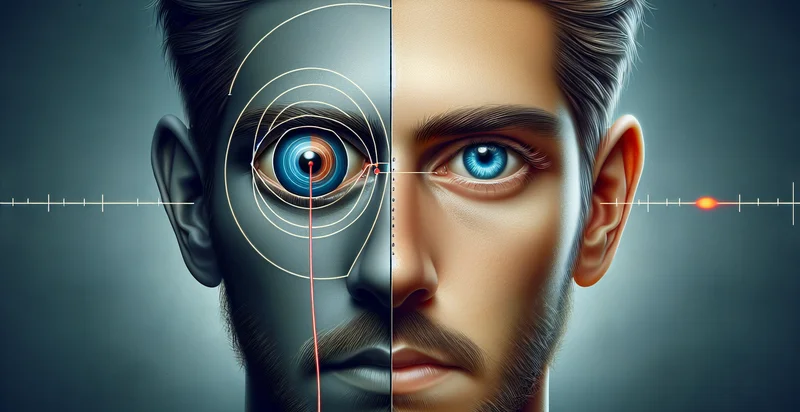Identify eye alignment
using AI
Below is a free classifier to identify eye alignment. Just upload your image, and our AI will predict the alignment of a person's eyes - in just seconds.

Contact us for API access
Or, use Nyckel to build highly-accurate custom classifiers in just minutes. No PhD required.
Get started
import nyckel
credentials = nyckel.Credentials("YOUR_CLIENT_ID", "YOUR_CLIENT_SECRET")
nyckel.invoke("eye-alignment", "your_image_url", credentials)
fetch('https://www.nyckel.com/v1/functions/eye-alignment/invoke', {
method: 'POST',
headers: {
'Authorization': 'Bearer ' + 'YOUR_BEARER_TOKEN',
'Content-Type': 'application/json',
},
body: JSON.stringify(
{"data": "your_image_url"}
)
})
.then(response => response.json())
.then(data => console.log(data));
curl -X POST \
-H "Content-Type: application/json" \
-H "Authorization: Bearer YOUR_BEARER_TOKEN" \
-d '{"data": "your_image_url"}' \
https://www.nyckel.com/v1/functions/eye-alignment/invoke
How this classifier works
To start, upload your image. Our AI tool will then predict the alignment of a person's eyes.
This pretrained image model uses a Nyckel-created dataset and has 15 labels, including Aligned, Amblyopia, Binocular Coordination, Binocular Vision, Esotropia, Exotropia, Eye Movement Disorder, Monocular Vision, Normal Alignment and Phoria.
We'll also show a confidence score (the higher the number, the more confident the AI model is around the alignment of a person's eyes).
Whether you're just curious or building eye alignment detection into your application, we hope our classifier proves helpful.
Related Classifiers
Need to identify eye alignment at scale?
Get API or Zapier access to this classifier for free. It's perfect for:
- Telemedicine Diagnosis: The eye alignment identifier can assist healthcare professionals in diagnosing conditions related to eye alignment, such as strabismus or amblyopia, remotely through telemedicine platforms. This would enable quick assessments and targeted treatment plans for patients without the need for in-person visits.
- Augmented Reality Applications: In augmented reality (AR) applications, the eye alignment identifier can enhance user experience by ensuring that virtual objects are correctly aligned with the user’s line of sight. This technology can lead to more immersive and realistic experiences in gaming, education, and training simulations.
- Optical Device Calibration: Optical devices, such as cameras and microscopes, can use eye alignment identification to optimize focus and improve image capture under various conditions. This application can be particularly useful in fields like photography, medical imaging, and scientific research, where precision is essential.
- Vision Therapy Tracking: The eye alignment identifier can monitor patient progress in vision therapy by providing objective data on eye positions over time. This information can help practitioners adapt therapy methods more effectively based on real-time analysis, leading to better outcomes for patients.
- Automated Quality Control in Manufacturing: In manufacturing environments where visual inspection is critical, the eye alignment identifier can ensure that products meet alignment specifications before packaging. This can improve quality assurance processes and reduce the rate of returns due to misaligned products.
- Driver Assistance Systems: Eye alignment identification can be integrated into advanced driver assistance systems (ADAS) to ensure that drivers maintain proper focus and attention on the road. This feature can provide alerts or engage corrective measures if signs of distraction or misalignment are detected, enhancing overall safety.
- Fitness and Sports Performance Analysis: In the realm of sports, the eye alignment identifier can be used to analyze athletes' visual focus and attention during training. By understanding eye alignment in relation to movement and technique, coaches can offer personalized feedback to optimize performance and reduce the risk of injuries.


